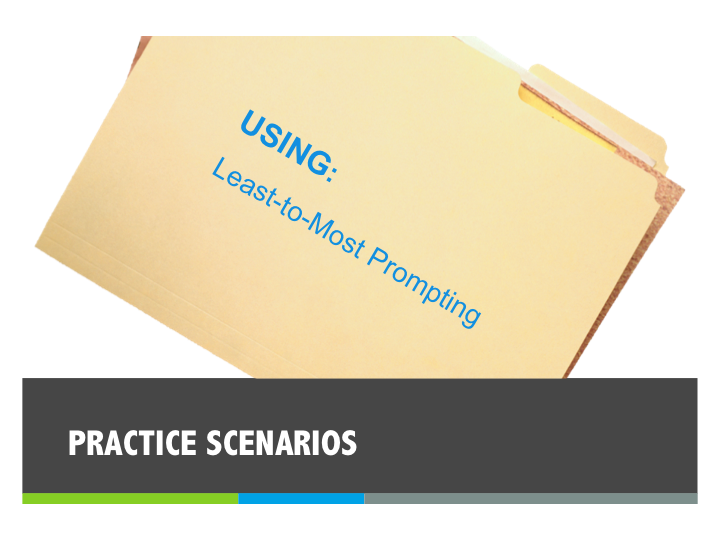Step 2 Implementing Least-to-Most Prompting
Using this prompting procedure requires following the steps outlined in the prompt hierarchy that was planned.
Step 2.1 Deliver the target stimulus and the cue
Present the target stimulus and the cue (or task direction).
- First get the toddler's attention.
- Then present the target stimulus and the cue.
EXAMPLE
Charlie is learning how to complete a clean-up routine. Charlie’s mom would first move close to Charlie and either stand in front of him at eye level or touching his arm. Then she would focus his attention to "all finished with eating." Charlie's mom would then hand Charlie the place and say, "Time to clean-up."
Charlie's mom secured Charlie's attention by standing in front of him at eye level or touching his arm.

Target stimulus: Charlie is all finished with eating.
Cue: Charlie's mom hands Charlie the plate and says, “time to clean-up.”
Step 2.2 Using the response interval, wait for the toddler to respond

Wait the number of seconds specified in the response interval. This is the time between delivering the cue and the prompt.
Parents can participate even in the early stages of using the prompting procedure by counting the number of seconds after the cue and then by signaling the EI provider to prompt if the toddler has not responded.
Step 2.3 Deliver prompts following the toddler's attempts
If the toddler's response is incorrect, provide positive feedback and the reinforcer to the toddler. This can be accomplished by interrupting the incorrect response, and then deliveriving the next prompt in the hierarchy. Also, deliver the controlling prompt last if toddler does not respond to the other levels of the hierarchy.
Use the response interval prior to delivering another prompt in the hierarchy.
Step 2.4 Fade prompts in the least-to-most hierarchy
As the toddler learns the target skill or behavior, you will need to implement the plan to fade prompts.
Review how to fade prompts in Step 1.11.
Tips for Effective Least-to-Most Prompting
When delivering prompts:
-
Prompts should be as weak as possible.
-
Unplanned prompts should be avoided.
-
Prompts should be faded as quickly as possible.
When fading prompts:
-
Use fewer levels of prompts. If a higher level of prompting is used, toddler may appear to be learning but may be dependent on the prompt not the cue.
-
Fading should be determined by monitoring toddler’s unprompted and prompted correct responses
-
Fade prompts and/or increase the response interval or wait time gradually and systematically.
-
Fade prompts as quickly as it is determined that toddler is responding without the prompts.
-
If prompts are not faded, prompt dependency can develop. Prompt dependency occurs as result of using prompts when not needed.
Practice Scenario: Using Least-to-Most Prompting
The practice scenario will open in a new browser tab/window.
When you have finished reviewing,
return to the module and take the Knowledge Check.
Knowledge Check

Question:
What should you do after getting the toddler’s attention and providing the target stimulus and cue?
Question:
What strategies should you use if the toddler responds incorrectly to a prompt?
Question:
Describe some prompt fading strategies.


